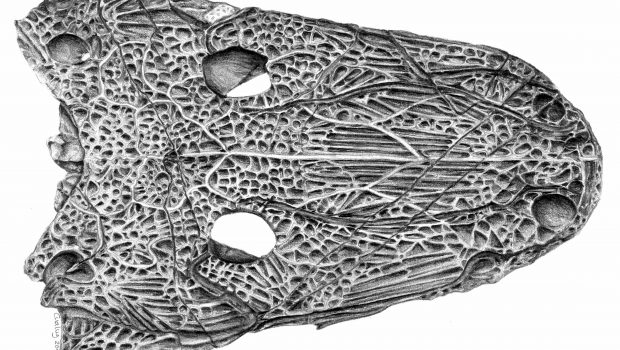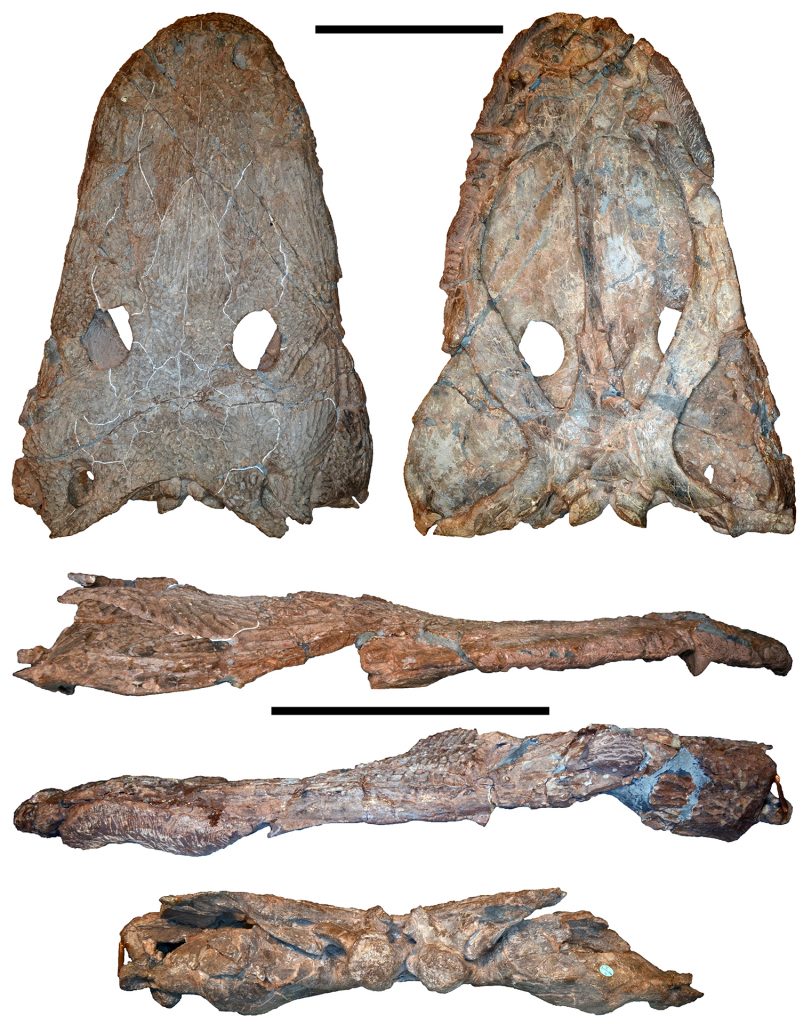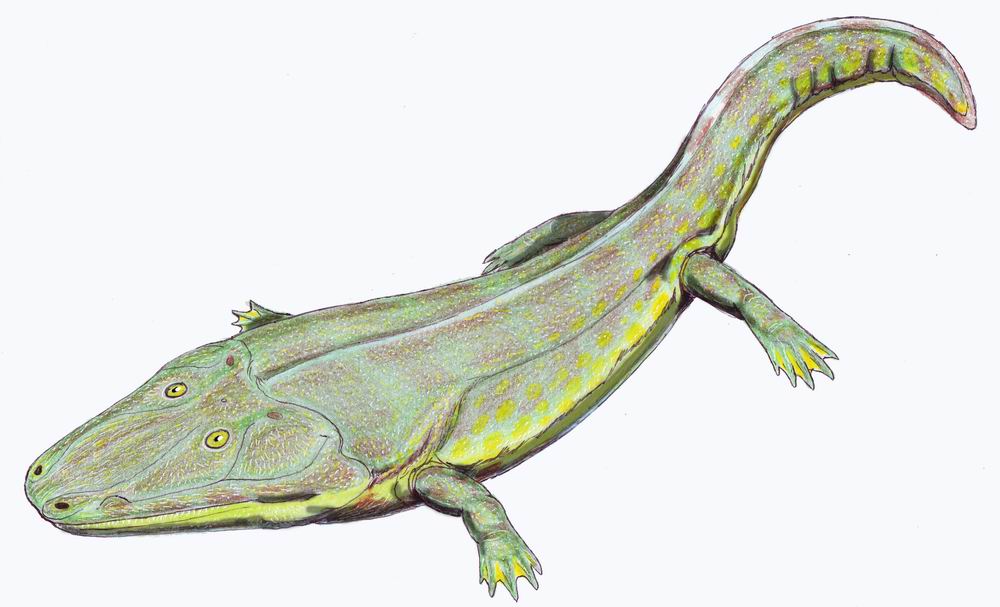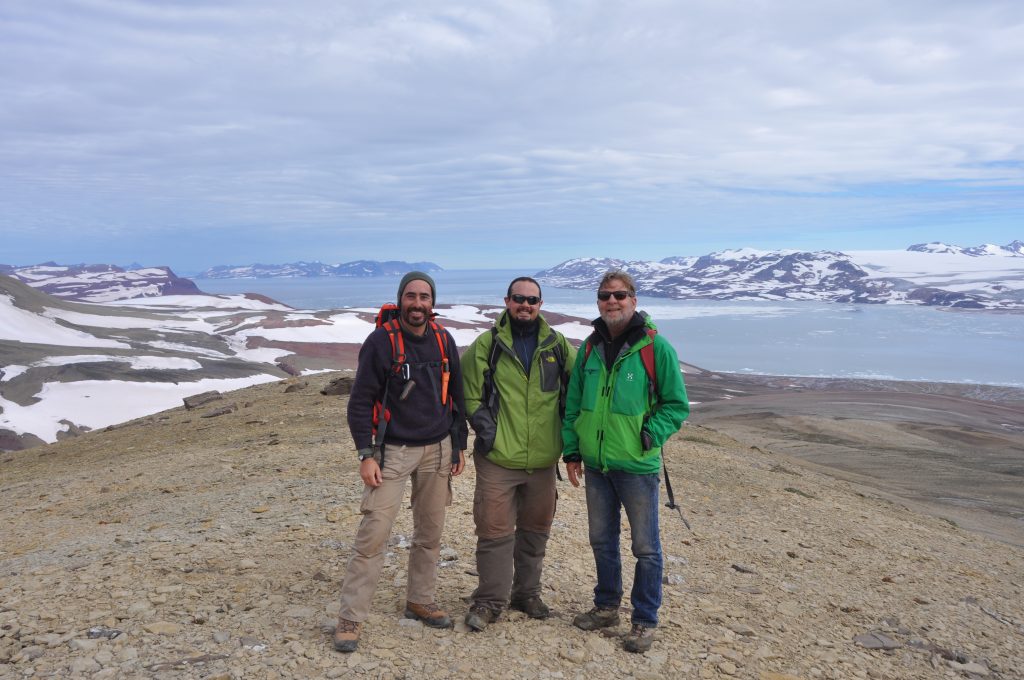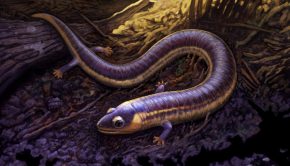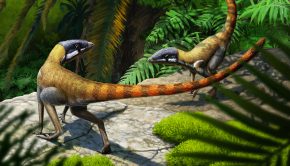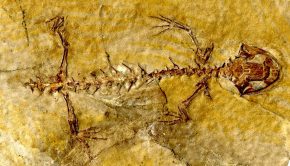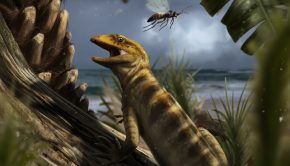208-million-year-old giant amphibian discovered in Greenland
A new species of Cyclotosaur, a giant salamander-like amphibian, has been described from the Late Triassic rocks of East Greenland.
Cyclotosaurs are temnospondyl amphibians, known from other Late Triassic deposits in Germany, Poland and Svalbard, but this new specimen represents the North-westerly-most ever found.
The new species, described in the Journal of Vertebrate Paleontology, is named Cyclotosaurus naraserluki, after the Greenlandic word for amphibian/salamander, ‘naraserluk’, and is represented by a complete skull and three vertebrae. The flat, triangular skull measures 57 cm long and 42 cm wide, allowing for estimates of a total body length of about 2.5 meters.
“C. naraserluki presents some unique characters in the anatomy of its skull bones that allows us to name it as a new species.” explained lead author Marco Marzola, NOVA University of Lisbon and the University of Copenhagen “It also presents a distinctive combination of characters shared with other cyclotosaurs from Germany and Poland, including a pair of premaxillary foramina. These are holes in the anterior part of the snout that served to accommodate long mandibular tusks, probably used for preying on fish and other aquatic animals”.
The new specimen was discovered in the 208 million year old Fleming Fjord Formation, Jameson Land Basin, East Greenland. During the Late Triassic period, this area was a vast lake system and Greenland belonged to the North American plate, which was just starting to separate from Europe, forming the North Atlantic Ocean.
“It is curious how we can find fossil amphibians in Greenland, a land nowadays mostly covered by ice.” Prof. Octávio Mateus, co-author of the study, commented “During the Late Triassic, Greenland laid much further to the South, and we know that the Jameson Land Basin had a paleolatitude of about 44ºN, the same latitude of Galicia and Northern Portugal today. This gave Greenland a temperate clime, ideal for these gigantic aquatic predators”.
The discovery of this new specimen adds to the understanding of the fauna of Greenland during the Triassic, but it also raises fundamental questions about the relationships and geographic distribution of species just before one of the largest mass extinctions on the planet: the Triassic-Jurassic extinction event.
“By the Greenlandic presence of Cyclotosaurus and Gerrothorax, another smaller temnospondyl amphibian found in Germany and Sweden, we can say that the Late Triassic amphibian fauna of Greenland had more affinity with faunas from Europe than they did with North America. This is particularly interesting because during the Late Triassic, Greenland was geographically closer to North America.” Marzola elaborated “We also notice this pattern among other coeval tetrapods, such as the crocodile-like phytosaurs, pterosaurs, and dinosaurs. The Greenlandic and European fossils both come from lands that, during the Late Triassic, laid above an arid climate belt that divided Europe and Greenland from the Southern USA. We believe this demonstrates that during this time, it was climate, rather than geographic distance, that played a key role in the distribution of life on Earth”.

